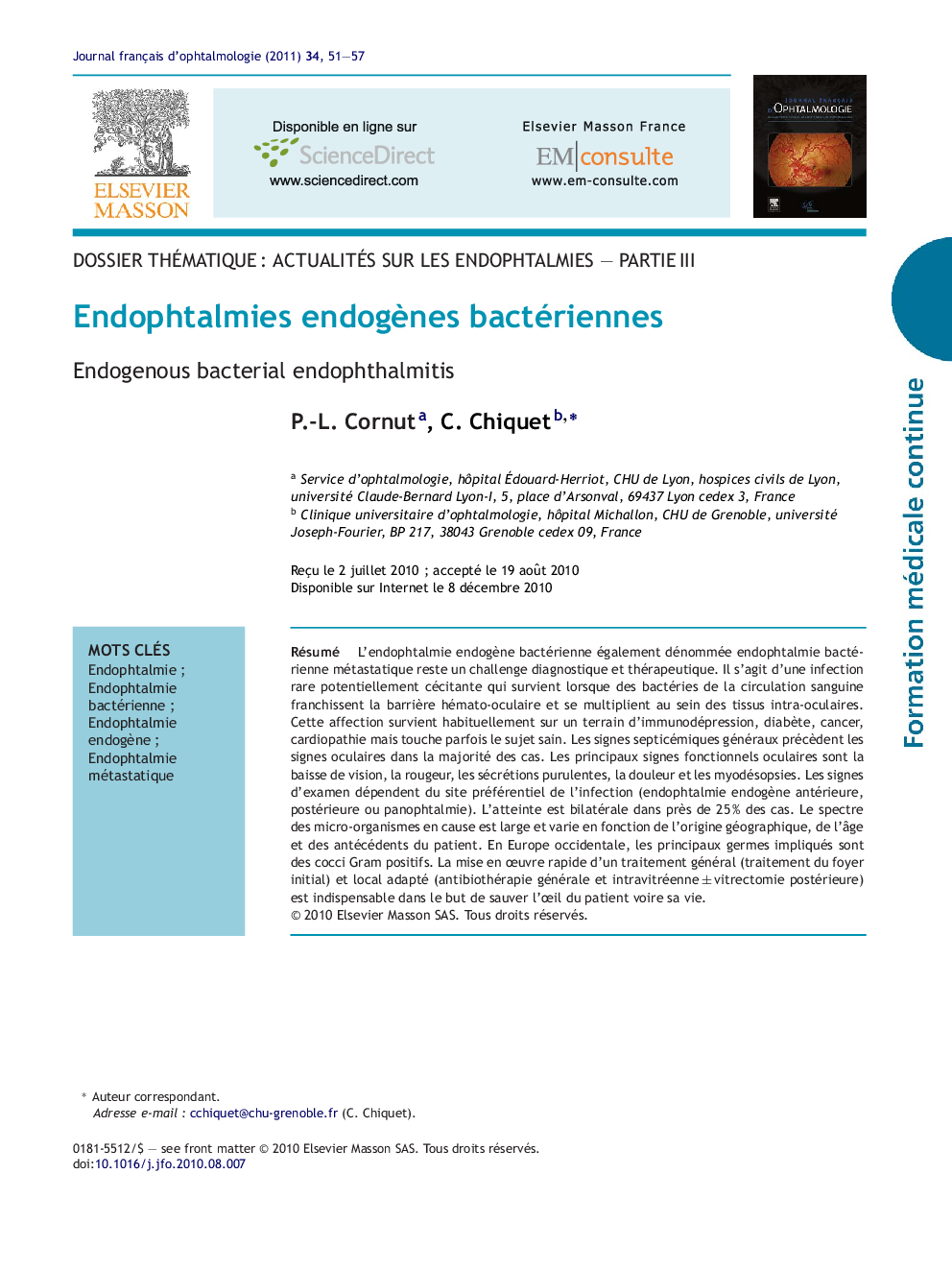| Article ID | Journal | Published Year | Pages | File Type |
|---|---|---|---|---|
| 4024607 | Journal Français d'Ophtalmologie | 2011 | 7 Pages |
RésuméL’endophtalmie endogène bactérienne également dénommée endophtalmie bactérienne métastatique reste un challenge diagnostique et thérapeutique. Il s’agit d’une infection rare potentiellement cécitante qui survient lorsque des bactéries de la circulation sanguine franchissent la barrière hémato-oculaire et se multiplient au sein des tissus intra-oculaires. Cette affection survient habituellement sur un terrain d’immunodépression, diabète, cancer, cardiopathie mais touche parfois le sujet sain. Les signes septicémiques généraux précèdent les signes oculaires dans la majorité des cas. Les principaux signes fonctionnels oculaires sont la baisse de vision, la rougeur, les sécrétions purulentes, la douleur et les myodésopsies. Les signes d’examen dépendent du site préférentiel de l’infection (endophtalmie endogène antérieure, postérieure ou panophtalmie). L’atteinte est bilatérale dans près de 25 % des cas. Le spectre des micro-organismes en cause est large et varie en fonction de l’origine géographique, de l’âge et des antécédents du patient. En Europe occidentale, les principaux germes impliqués sont des cocci Gram positifs. La mise en œuvre rapide d’un traitement général (traitement du foyer initial) et local adapté (antibiothérapie générale et intravitréenne ± vitrectomie postérieure) est indispensable dans le but de sauver l’œil du patient voire sa vie.
SummaryEndogenous bacterial endophthalmitis, also called metastatic bacterial endophthalmitis, remains a diagnostic and therapeutic challenge. It is a rare and potentially sight-threatening ocular infection that occurs when bacteria reach the eye via the bloodstream, cross the blood–ocular barrier, and multiply within the eye. It usually affects immunocompromised patients and those suffering from diabetes mellitus, malignancy, or cardiac disease, but has also been reported after invasive procedures or in previously healthy people. In most cases, the ocular symptoms occur after the diagnosis of septicemia or systemic infection. Ocular symptoms include decreased vision, redness, discharge, pain, and floaters. The ocular inflammatory signs may be anterior and/or posterior. Bilateral involvement occurs in nearly 25% of cases. A wide range of microorganisms are involved, with differences in their frequency according to geography as well as the patient's age and past medical history, because of variations in the predisposing conditions and the source of the sepsis. The majority of patients are initially misdiagnosed, and ophthalmologists should be aware of this because prompt local and general management is required to save the eye and/or the patient's life.
